After extensive preparations, the Art & History Museum in Brussels is opening two new galleries dedicated to 19th century decorative arts and Belgian Art Nouveau and Art Deco. Covering a combined area of 1,200 m², these galleries showcase numerous exceptional artworks, many displayed for the first time. The patronage of the Baillet Latour Fund has been instrumental in realizing this project. The highlight is the restored and reassembled winter garden of the Cousin House, designed by Victor Horta.
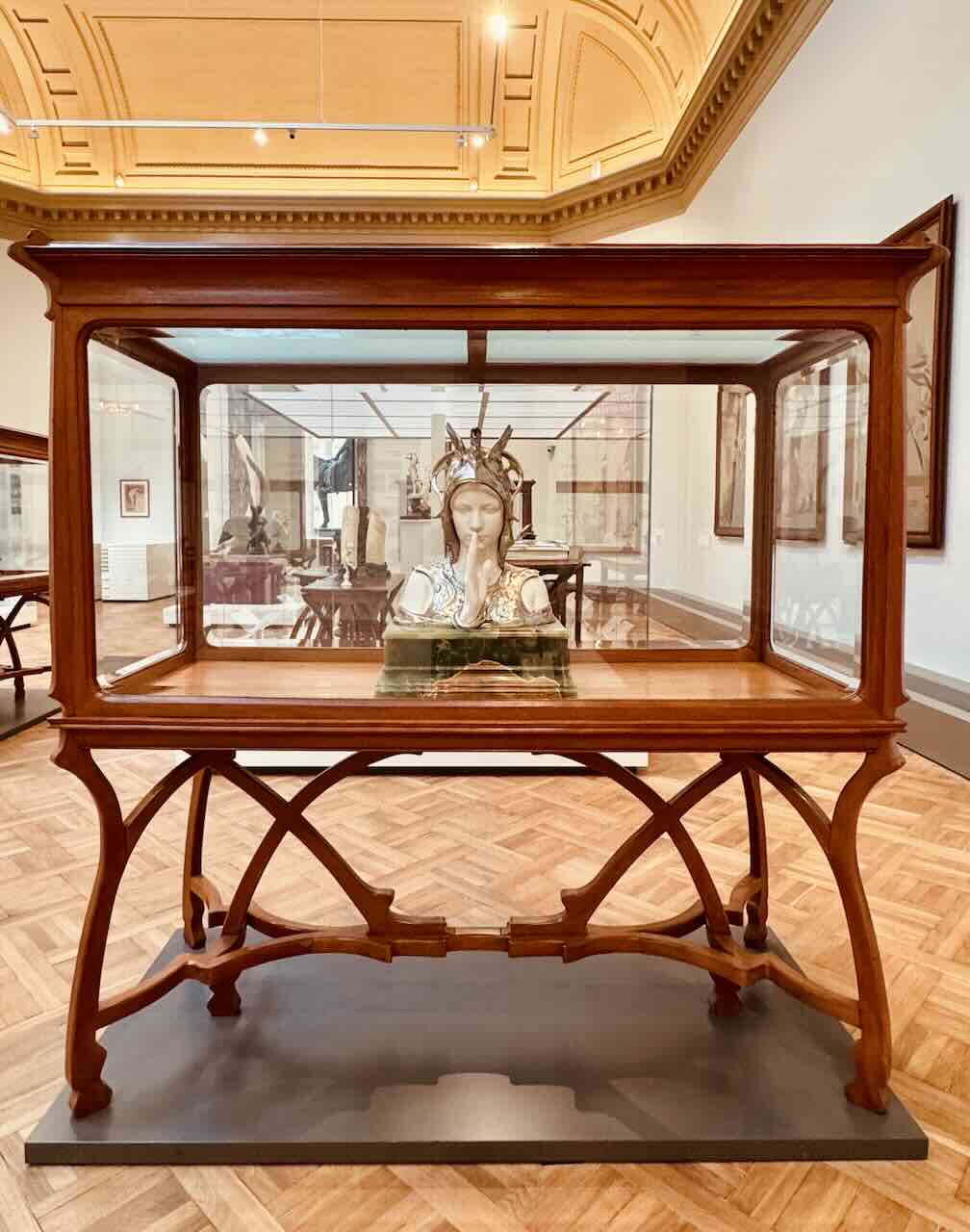
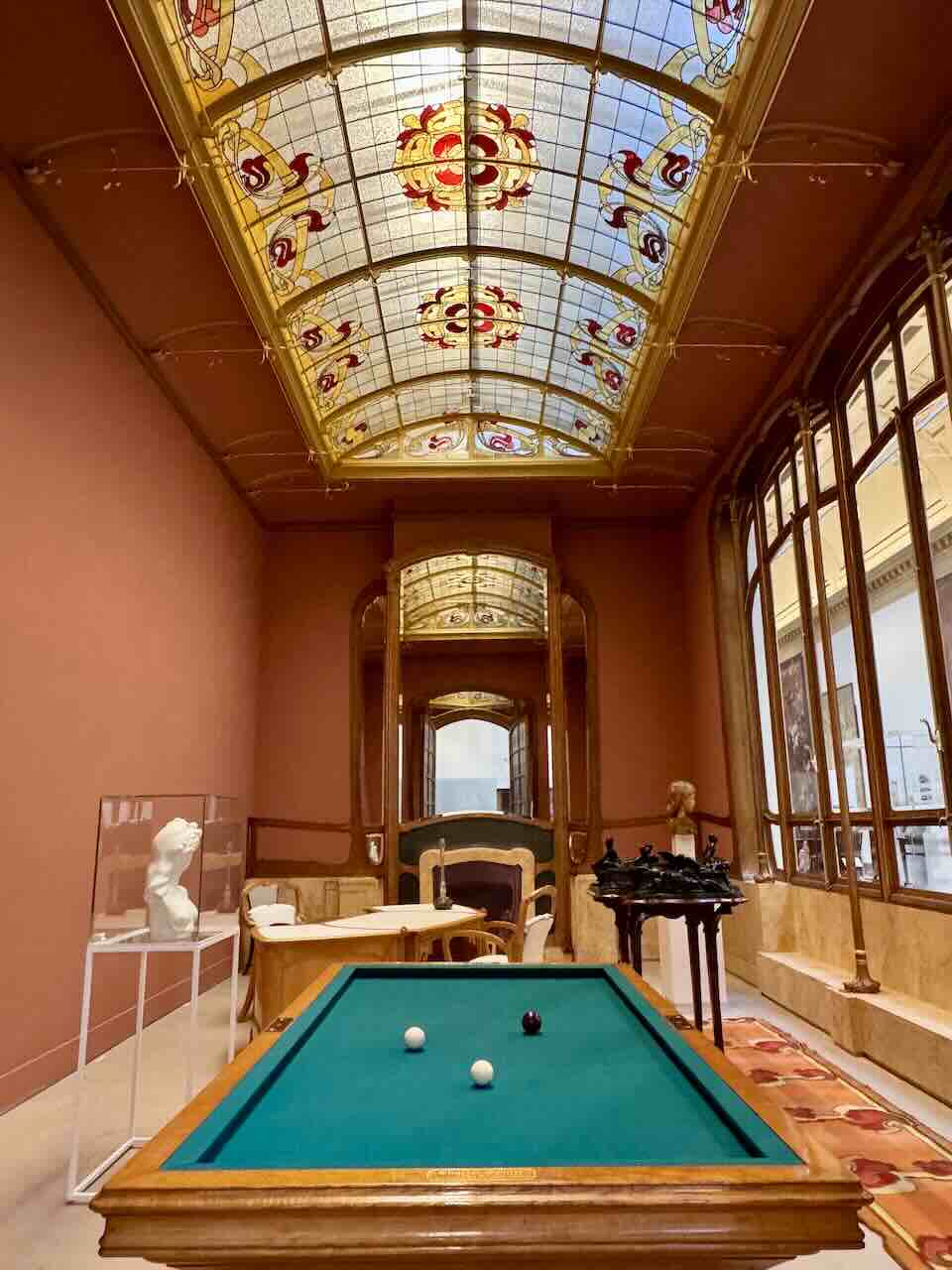
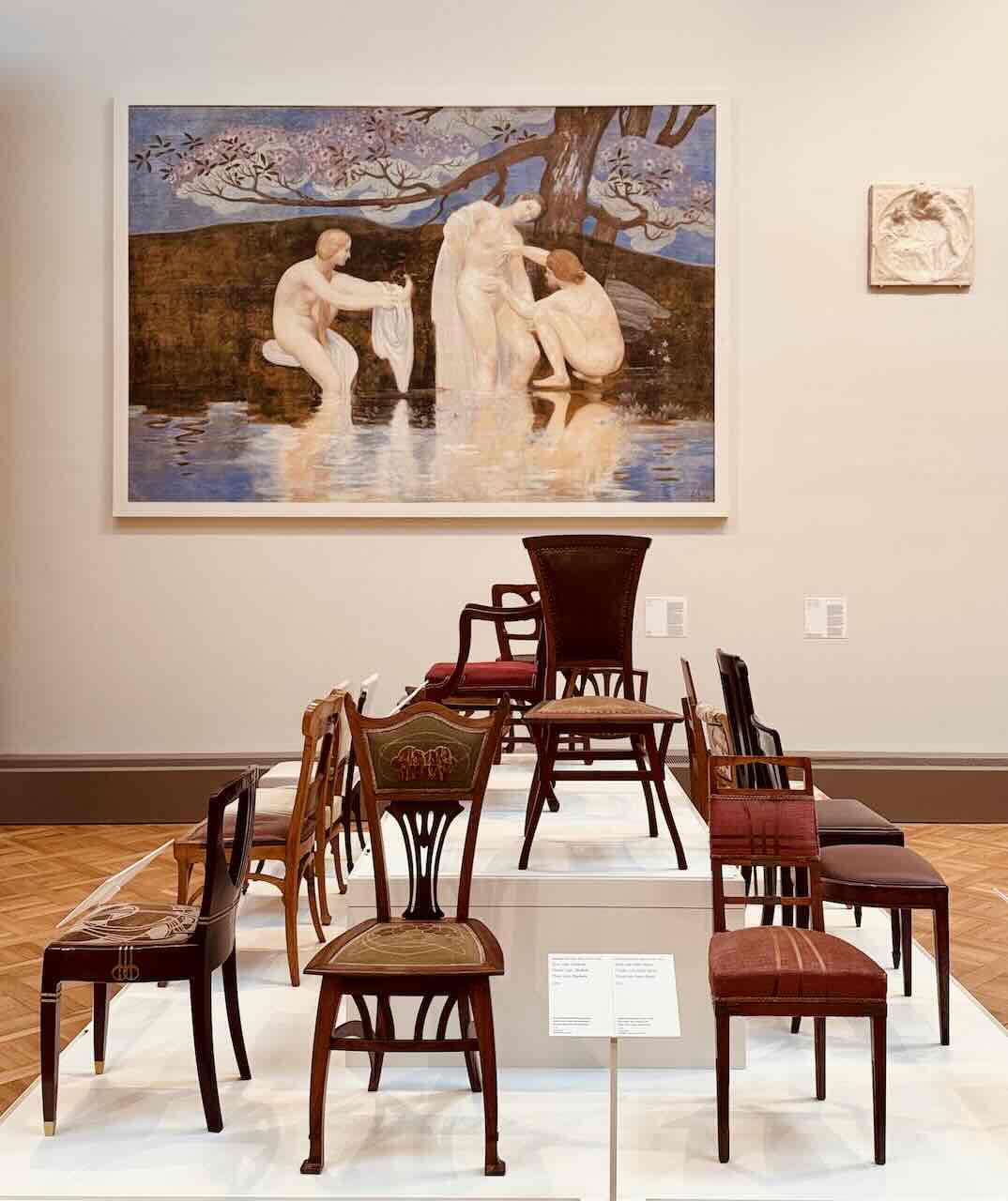
The first gallery focuses on Belgian Art Nouveau and Art Deco. Art Nouveau, emerging in 1893 as Belgium’s first original national style, opens the circuit. Various themes highlight the stylistic diversity of Belgian Art Nouveau, linked to national and international exhibitions, social and economic contexts, and friendships among patrons and artists. Prominent figures such as Paul Hankar, Henry van de Velde, Victor Horta, Georges Hobé, Paul Hamesse, Léon Sneyers, Gustave Serrurier-Bovy, Isidore and Hélène De Rudder, Charles Van der Stappen, Philippe Wolfers, and others are prominently featured through informative texts, labels, and archival photos, connecting their creations to their historical context.
The spatial centerpiece is the reassembled winter garden, a steel structure with gilded visible parts, featuring stunning stained-glass windows in the ceiling and in the double entrance door. This refined pavilion, measuring 4 m by 9 m and 6 m high, is finished with wooden paneling and a marble fireplace. Thanks to the foresight of one of Horta’s last students, architect Jean Delhaye, the components were carefully dismantled in the 1960s. Six decades later, the restoration and reassembly were led by Barbara Van der Wee Architects, specialists in Horta’s oeuvre. Supported by numerous patrons, including the TotalEnergies Foundation, this project is the only Horta structure to be successfully reconstructed after demolition, unlike the People’s House and the Aubecq House. Its significance can hardly be overstated, given that four of Horta’s residences are listed as UNESCO World Heritage Sites.
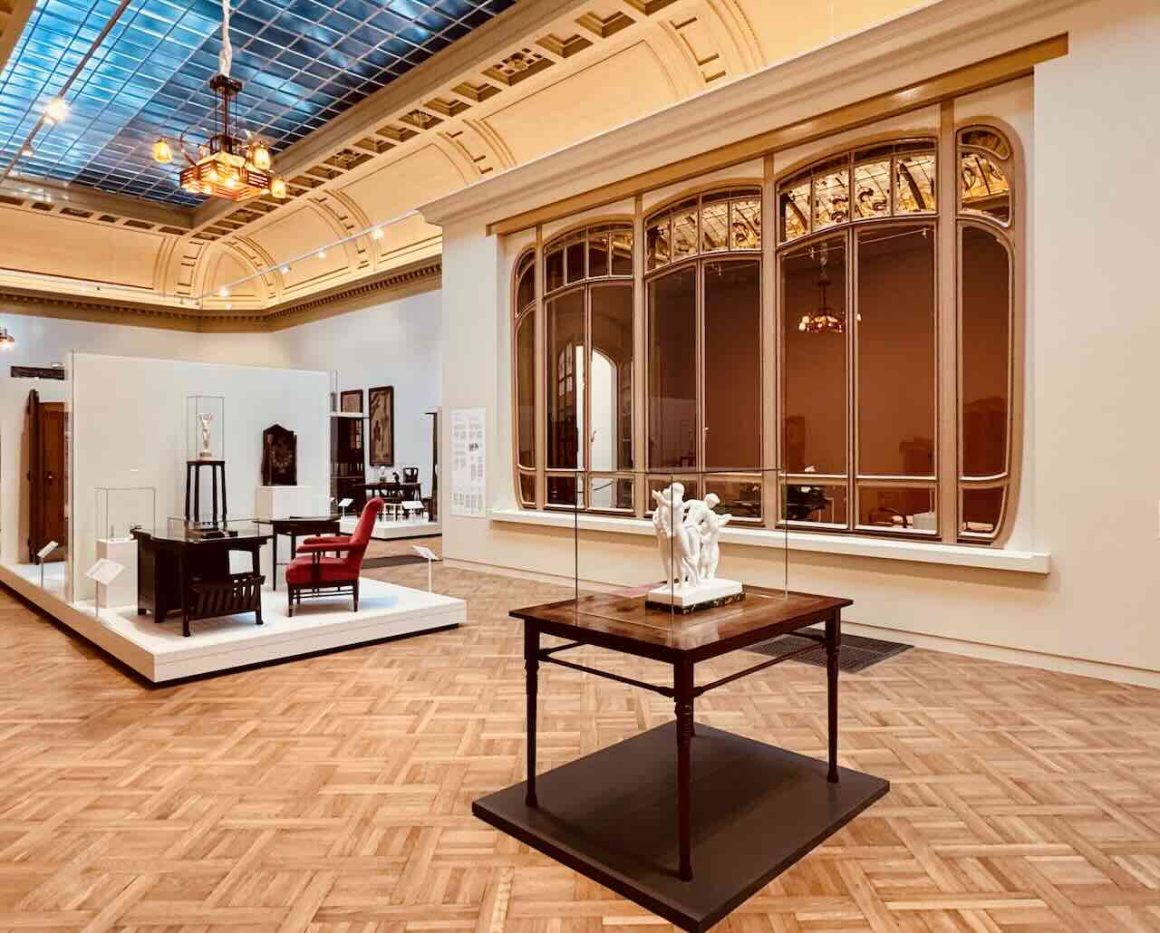
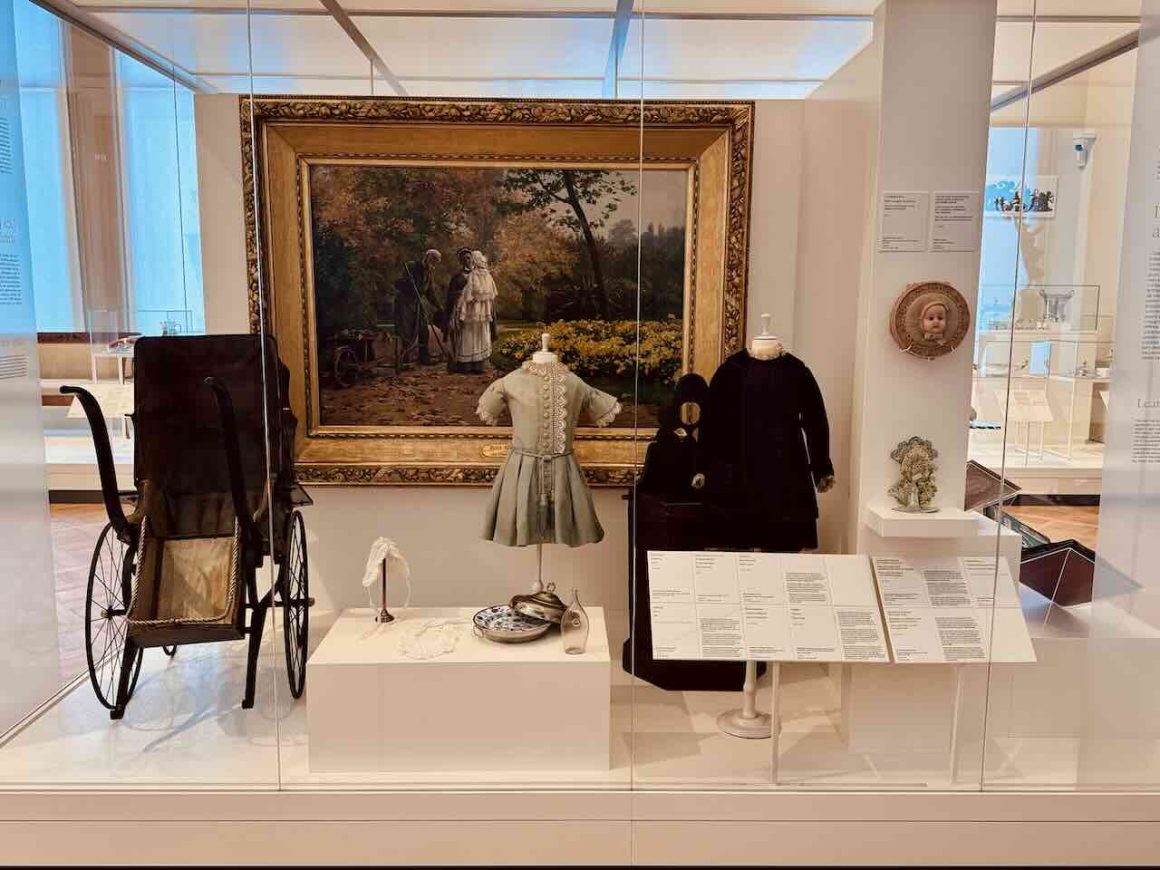
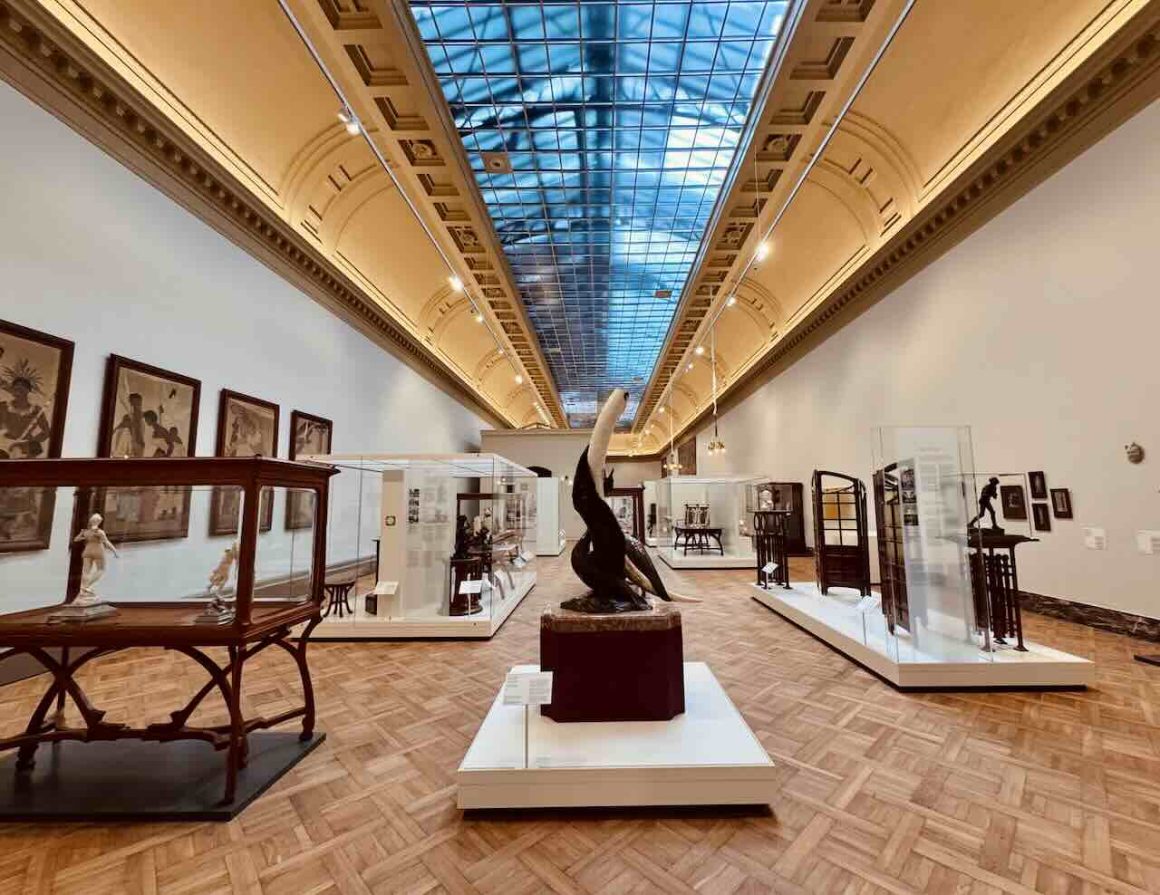
The 1910s, with works by artists like Alphons Van Beurden, Constant Montald, and Oscar Van de Voorde, usher in Art Deco, the dominant style of the 1920s and 1930s. While France led with unparalleled creativity, Belgium distinguished itself with high-quality creations. The 1925 International Exhibition of Modern Decorative and Industrial Arts in Paris was a milestone, where Belgium shone through the work of designer and ensemblier Philippe Wolfers. At the entrance to the Belgian pavilion stood Pieter Braecke’s imposing sculpture The Decorative Art, recently rediscovered in the museum’s plaster workshop and now displayed for visitors. Despite this success, Belgium recognized the need to reform its art education, leading to the establishment of the La Cambre/Ter Kameren art school under the progressive leadership of Henry van de Velde. The Art Deco section also highlights trends such as non-European influences, modernism, and a return to classical inspiration. Other notable designers and firms include Albert Van huffel, Charles Catteau, Val-Saint-Lambert, De Coene Brothers, and Marcel-Louis Baugniet. The gallery concludes with Hunting Diana, an iconic, vibrantly lacquered bronze sculpture by Marcel Wolfers.
The 19th century decorative arts gallery is centered around major societal changes. Urbanization and the rise of the bourgeoisie brought new dynamics and ideologies. Science, technology and mechanization advanced rapidly, reshaping society and fostering new styles in decorative arts. At the century’s start, the neoclassical style, inspired by classical antiquity, dominated, evolving into the Directoire, Consulate, and Empire styles. Napoleon Bonaparte’s vision significantly influenced the development and dissemination of this aesthetic in furniture and luxurious objects. Silverwork by Jean-Baptiste Claude Odiot from Paris represents the pinnacle of craftsmanship. Several such treasures, from the bequest of Count Thierry de Looz-Corswarem via the King Baudouin Foundation, are displayed, alongside furniture from the renowned Waterloo Salon, crafted in George Jacob’s Parisian workshop.
The Restoration style under Charles X in France and William I in the United Kingdom of the Netherlands (which included present-day Belgium) introduced a lighter, more playful aesthetic. Brussels porcelain was highly sought after, with Frédéric Faber painting luxury porcelain based on Jean-Baptiste Madou’s lithographs. The Vonêche Crystal Factory, the precursor to Val-Saint-Lambert and Baccarat, produced exquisite luxury glassware. Following the Restoration, historicist interpretations emerged, including Neo-Gothic, Neo-Rococo, and Neo-Renaissance styles. Neo-Gothic resonated particularly with Catholics, influencing churches, schools, stations, post offices, castles, and homes. Belgium was a European reference for this style and for eclecticism or stylistic pluralism. Figures like Emile Gallé from Nancy, active in furniture and decorative glass, foreshadow the arrival of Art Nouveau, completing the cycle.
Beyond stylistic developments, the 19th century gallery addresses societal themes through objects: the art of dining, hygiene, entertainment and tourism, outdoor leisure, travel, childhood (focusing on early years, play and learning), lighting, timekeeping, fashion, photography, communication, and applied arts. The Verhaeghe de Naeyer collector family, who bequeathed numerous paintings and objects to the museum in 1943, is also honoured.
The understated scenography is designed by the renowned Pièce Montée studio from Gentbrugge.
The public can visit these treasures starting Friday, 13 June 2025. From that day until Sunday, June 15th, admission will be free for all, allowing the Belgian public to be the first to fully enjoy its exceptional heritage.
More info: www.artandhistory.museum
Photos: BeCulture




